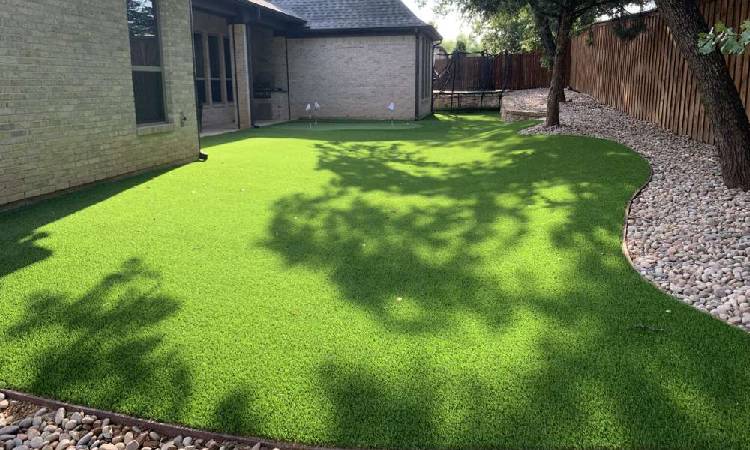
Why Grass Is Hard To Grow In Small Yards
Growing grass in a perfect environment can be challenging even during the best of times, but throw in limited space, shade, soil inequality, watering challenges, dense vegetation, abundant foot traffic, compacted soil, maintenance issues, and unique microclimates, and the task just got tougher. Small yards, by definition, have many of these potential issues, but with fewer resources to deal with them. Most grass needs plenty of sunshine to thrive, as do most trees and plants. There are some shade-tolerant grass varieties, but they are either developed for cold weather or warm weather and won’t grow well in the wrong climate zone. Some can straddle the fence and go a little cooler or warmer but are susceptible to extreme changes either way.
Growing grass in small yards can be difficult for the following reasons:
- 1. Limited Space: There is only a finite amount of room for grass to grow in a small yard. The smaller space means more competition between grass, plants, and trees for limited resources such as sunlight, water, nutrients, and growing space. When grass is competing for space with trees and bushes, the grass typically loses out with its smaller and shallower root system. This limited space also means that any damage or stress on the grass such as consistent pet or foot traffic and yard projects have a larger impact on the turf.
- 2. Shade: Most grass needs at least four hours of direct sunlight each day just to survive, and it needs five to six hours of direct sunshine to thrive. If grass doesn’t receive this amount of sunlight, photosynthesis may be hard-pressed to happen. Some shade-tolerant grass varieties need less sunshine to survive, but they are cold or warm-weather specialty grasses and many have to be planted by seed. Numerous possible obstructions work to keep sunlight from reaching the ground in a small yard environment. These include trees, shrubs, fencing, buildings, utility equipment, play structures, etc. When sunlight is scarce, grass with stretch toward the light and become thin and weak in doing so. Any shade can deprive grass of its ability to photosynthesize and grow b, thus stunting grass growth. When there is too much shade, the soil is often not fertile enough to support healthy grass. Therefore, b grass growth may suffer.
- 3. Soil: Variations in soil quality, pH, and compaction can occur easily in small yards. Good soil amendments can help, but it can still be an uphill battle. Also, poor soil conditions brought on by nutrient deficiencies or poor drainage can impact the growth of grass. Fertilizer and good aeration are important for good soil conditions that are conducive to b grass growth.
- 4. Water: Small yards may receive more runoff from nearby roofs and structures, making the ground overly moist and attracting grass fungus. Watering at night can also cause fungal problems for the turf that may not get enough sunlight to evaporate the water quickly enough. In addition, poor drainage or the overwatering of such a small space can lead to shallow grass roots, which weakens grass over time since the roots can’t grow deep due to the lack of oxygen because the water is filling the air holes in the soil.
- 5. Foot Traffic: Soil compaction can be a concern with small yards since there is a limited area in which people and pets can walk and play, leading to concentrated foot traffic in areas. Larger yards don’t have this problem since there is a lot more space for visitors to spread out. The soil compaction and concentrated damage to the grass in small yards makes it harder to grow in those conditions.
- 6. Yard Maintenance: Since large lawn equipment is hard to use in small spaces, it may be more challenging to maintain a small yard. Proper lawn care is essential for a healthy, good-looking yard.
- 7. Microclimates: Since there can be varying degrees of moisture, sunlight, nutrients, and wind in a small yard setting, it’s important to choose the appropriate grass varieties to increase the chances that grass growth will be successful.
To overcome the challenges listed above and successfully grow grass in a small yard, consideration needs to be given to grass varieties that are perfectly suited to specific conditions in the area to be improved. Soil amendments, consistent watering, managing foot traffic, careful yard maintenance, and minimizing shade should also be considerations. If none of this sounds appealing and there is just too much competition from shade, vegetation, foot traffic, lawn equipment restrictions, or poor soil quality, then a good alternative is to install artificial grass instead of enduring all the upkeep needed to grow grass in a small yard.


